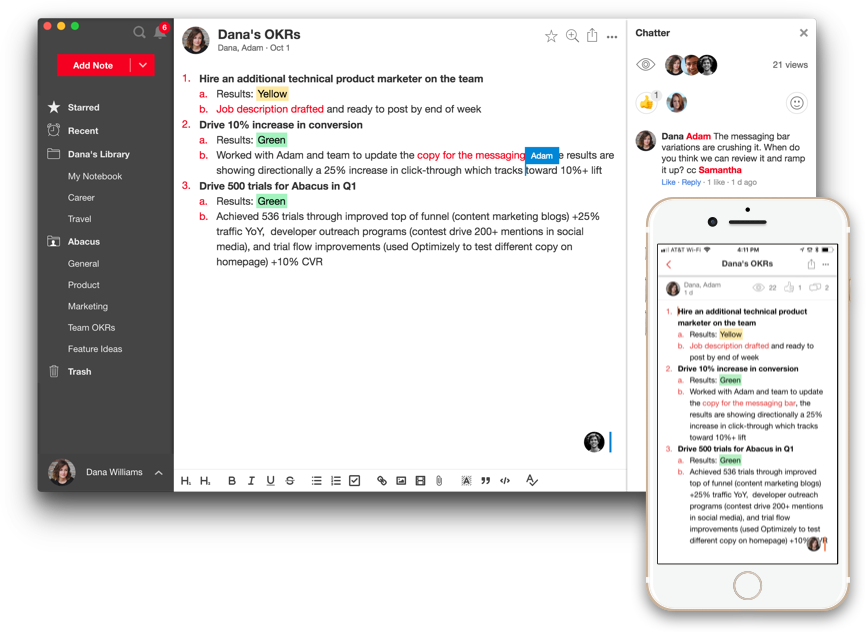Notes for Stand Up Meetings

Whether you call it your daily stand up, daily scrum, or team huddle, stand up meetings are an invaluable way for small teams to stay in sync and accountable to one another.
What is a stand up meeting?
Stand up meetings are a way for small teams to meet on a daily basis to get on the same page for their work. They are called stand up meetings to emphasize their informal, short nature - if they are so short you never need to sit - that's an efficient and effective meeting!
Stand Up meetings are typically used in development teams as part of an agile or scrum methodology, but can also be used in general business settings as well.
How stand up meetings are structured
Stand up meetings typically have an assigned Scrum Master, who leads the stand up meeting. They ensure that the meeting is scheduled and run effectively. Typically they will go from person to person and ask three questions:
- What did you accomplish yesterday?
- What do you plan to accomplish today?
- Do you have anything blocking you?
Three tips for ensuring successful stand up meetings
Keep the meeting duration within 15 minutes
Stand up meetings are intentionally short meetings that are held every day to get everyone in sync on what they're working on and let everyone help with what might be blocking them. What they are not is status reports or places for lengthy discussions. The leader of the meeting can ensure that this is the case by setting clear ground rules and actively managing the meeting participants to ensure that discussions are taken offline and follow up items are identified and assigned.
Keep it small and routine
If your goal is to keep the meeting under 15 minutes, then be careful about the size of the meeting as your team grows. With 15 attendees, that means each person gets one minute or less to cover their work. As meetings grow, the content can become less relevant to the broader group or difficult for the team to follow closely. Sometimes it makes sense to reduce or split the meetings.
In addition to this, ensure that meetings are routine and start on time without waiting for stragglers. By holding to the meeting start time, it's more respectful to the existing attendees and also sets an expectation that this is a meeting that really will only take 15 minutes rather than extending into a meeting that starts and ends 10 minutes late.
Reduce the unnecessary documentation
Stand up meetings are supposed to be informal and quick, and official documentation can create unnecessarily formality and structure. It also gives an excuse for people to skip it and say they'll read or send notes later. That said, it can be helpful to have an informal written log of what happened at the standup for people to reference.
Some helpful strategies that Notejoy's users have used for documenting standups include creating a regular template for each day for attendees to briefly fill out. The note can contain each team member's name, and three bullets under their name to fill out the stand up information: what they did yesterday, what they plan to do today, and any blockers they have. This can be quickly typed in at the meeting or minutes before the meeting, with the bullet format emphasizing a brief update.
In addition to this, it can be helpful to document the action items that need to happen after a blocker is identified. If an action needs to be taken by someone else, quickly capturing that note ensures accountability. More tips on leveraging Notejoy for stand up meetings can be found here.
Leveraging Notejoy for stand up meetings
Notejoy makes it fast and easy to get work done for teams to stay organized and focused on the task at hand.

With Notejoy, you can easily capture your most important information and action items, without the friction of heavyweight tool. From there, it's easy to share this with others to start a collaborative discussion, or save them somewhere where it will be easy to reference in the future. Bring your team together with the Notejoy Slack integration, or clip articles into notes for discussion or reference with the Notejoy web clipper. It's easy to incorporate tags for reference, project management, workflow management, and more.
Notejoy is free to sign up. Get started today for free